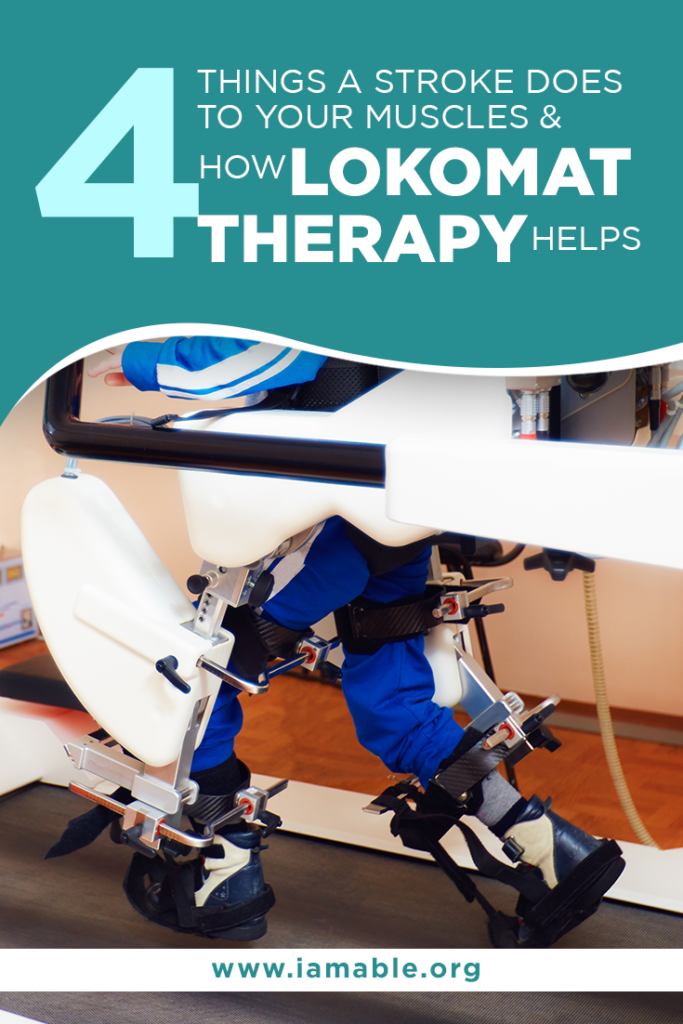Miami, FL 33186

A stroke can have a wide range of effects that last long after the traumatic event. One aspect of the body that experiences a significant impact is the muscular system. What are some of the things that a stroke does to your muscles? How can you overcome these effects to maximize your recovery? We will consider how Lokmat therapy, a form of activity-based therapy, can offer positive results. But first, let’s look at four ways that stroke affects the muscles of the body.
Also called hypotonia, a reduction in muscle tone is expected in the wake of a stroke, which can happen for several reasons.
The central nervous system (CNS) has a process in place that prevents muscles from overstretching and becoming damaged. The muscle fibers contract to fight the stretch because activity increases in the nerves. This is why your muscles relax when you are not using them. However, after a stroke, specific muscles may no longer be able to perform this vital function.
The result is that muscles can involuntarily stay flexed. This can result in pain and even potential injury to the muscle. When a muscle stays in a flexed state, we call it spasticity. Following a stroke, spasticity is common.
Also called hypertonia, an increase in muscle tone can occur when a stroke inhibits the part of the brain that causes the muscles to relax. You probably notice a correlation between this issue and the two we have already discussed. Spasticity sounds similar because it is a specific type of hypertonia. And hypotonia sounds familiar because it is the opposite of increased muscle tone. How does a stroke create two opposite reactions in the muscles?
Hypertonia causes the muscles to flex and pull in toward the body. While a reduction in muscle mass and weakness may occur, sometimes a person also experiences damage that prohibits the brain from sending a stop order. This is why you may have a clenched fist that you can release. The hips, knees, and elbows are other common areas for hypertonia to occur after a stroke.
Unfortunately, the damage that results from these contractions can eventually become permanent. The muscle fibers eventually stiffen up and shorten. This can lead to a deformity in certain joints.
Hemiparesis refers to weakness on one side of the body. Hemiplegia refers to paralysis on one side of the body. Either or both can occur after a stroke. “Hemi” refers to the condition occurring on only one side of the body. This is common because a stroke usually impacts one side of the brain. In turn, the opposite side of the body experiences the effects. This happens because each side of the brain controls movement for the other side of the body.
While some damage may be permanent, other motor functions could potentially be recovered via physical therapy and various forms of activity-based therapy, including Lokomat therapy.
Lokomat therapy is an unweighing treadmill that allows patients with paralysis or paresis to safely walk for exercise and gait retraining. It works by using a harness so that you do not have to support your own bodyweight. An exoskeleton attaches to your legs, so the machine can even perform some or all of the walking movement for you. How does this support recovery?
In southern Florida, iAM ABLE is using Lokomat therapy to help stroke patients in their recovery. We also offer an eBook to help you prepare mentally and emotionally for your stroke recovery journey. The title is 7 Unbelievably Important Steps to Take to Thrive after Paralysis. We encourage you to download it today.
Grab our free e-book 7 Unbelievably Important Steps to Take to THRIVE after Paralysis by clicking the image below.
